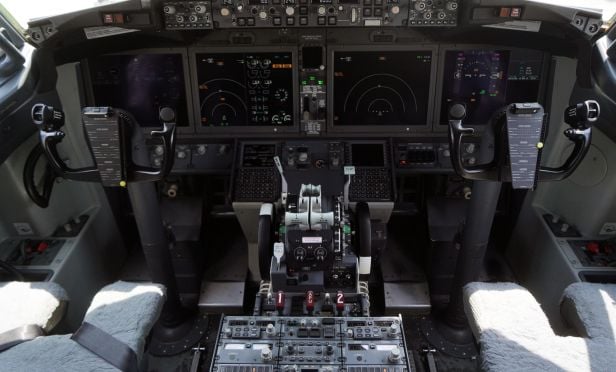 The cockpit of a grounded Lion Air Boeing Co. 737 Max 8 aircraft is seen at terminal 1 of Soekarno-Hatta International Airport in Cenkareng, Indonesia, on Tuesday, March 15, 2019. (Photo: Dimas Ardian/Bloomberg)
The cockpit of a grounded Lion Air Boeing Co. 737 Max 8 aircraft is seen at terminal 1 of Soekarno-Hatta International Airport in Cenkareng, Indonesia, on Tuesday, March 15, 2019. (Photo: Dimas Ardian/Bloomberg)
The recent crashes of two Boeing Co. 737 Max jets raise questions about whether U.S. transportation regulators are ready for self-driving cars, trucks and other forms of automated transportation, Representative David Price, chairman of the House Appropriations Committee's transportation panel, said Wednesday.
Recommended For You
Want to continue reading?
Become a Free PropertyCasualty360 Digital Reader
Your access to unlimited PropertyCasualty360 content isn’t changing.
Once you are an ALM digital member, you’ll receive:
- Breaking insurance news and analysis, on-site and via our newsletters and custom alerts
- Weekly Insurance Speak podcast featuring exclusive interviews with industry leaders
- Educational webcasts, white papers, and ebooks from industry thought leaders
- Critical converage of the employee benefits and financial advisory markets on our other ALM sites, BenefitsPRO and ThinkAdvisor
Already have an account? Sign In Now
© 2025 ALM Global, LLC, All Rights Reserved. Request academic re-use from www.copyright.com. All other uses, submit a request to [email protected]. For more information visit Asset & Logo Licensing.








